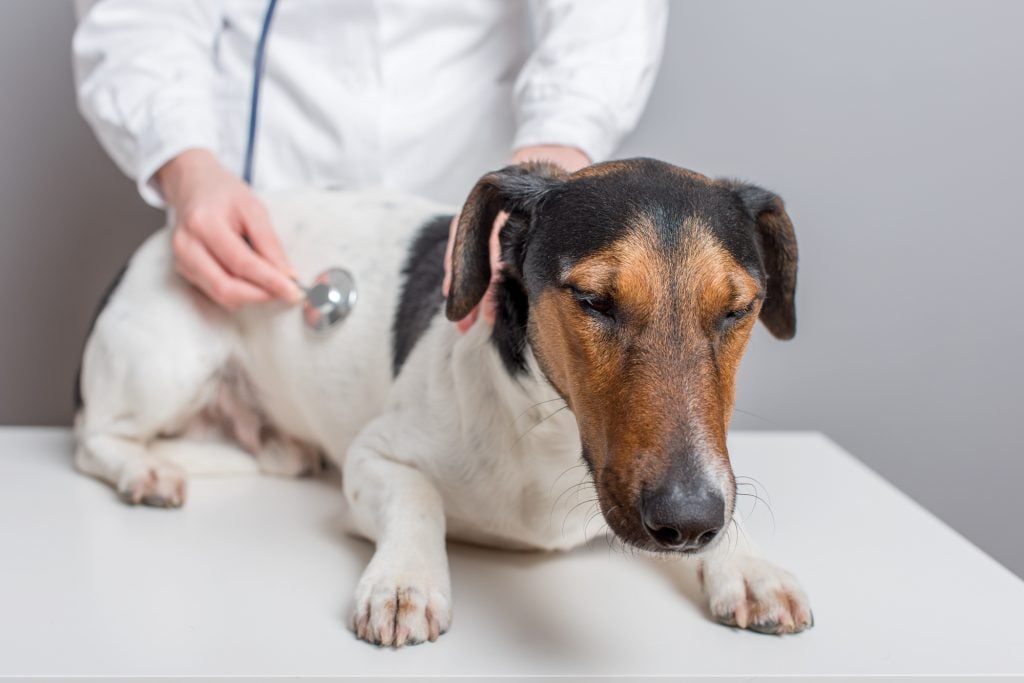Keeping our animals safe during the holidays is not always easy. Do you know how to prepare for an emergency or what to do when things don’t go the way you thought they would? Do you know how to prepare your pet sitter?
Many regular veterinary clinics don’t stay open over the holidays and they don’t have emergency hours. As a Certified Veterinary Tech, I know about Murphy’s Law when it comes to pet emergencies. Things will go wrong in any given situation if you give them a chance!
Based on experience, it’s much better to be prepared before the holiday guests arrive. If you’re using a pet sitter or dog walker, they also need the right information at their fingertips.
There are common problems during this time of year that should be considered an emergency.
Common holiday pet emergencies
Choking and intestinal obstruction issues: Decor and wrapping paper come out once a year and it seems to take over the entire house. Small ornaments may fall off the tree and you’re not even aware this happened until your dog starts to choke. A string can literally wrap around the intestines.
Heat and chemical burns: These aren’t common but can happen in the kitchen or when animals are nosing around the grill outside. You must seek immediate medical attention as a dog’s fur can easily mask deeper damage. For these reasons, the kitchen should be off limits during holiday prep time.
Electric Cord Shock: There are lights everywhere during the holidays and extension cords coming from every socket. This can cause burns to their lips, tongue, and mouth.
Poisoning: During the holidays, it’s typically toxic foods that bring about problems and ultimately visits to the emergency vet. Toxic foods that fall into the emergency category include chocolate (of course), grapes, high-fat foods, Xylitol and yeast dough.
When to get help
If any of these emergencies occur, you need to know the symptoms. Use the below information as a resource guide if there is any question in your mind about whether or not you should head to the emergency hospital.
- Signs of choking: Dog cannot breathe, struggling or gasping for breath, loud breathing noises, pale gum color
- Signs of intestinal blockage: Vomiting, diarrhea, loss of appetite
- Signs of heat and chemical burns: Fur can mask deeper damage and in the case of chemical burns, the fur can trap a chemical and continue to burn a dog even if the substance seems to have been removed.
- Signs of electric cord shock: Blackened or burn marks in your dog’s mouth, the smell of an odor of burning flesh. Difficulty breathing. Shock is a life-threatening condition.
- Signs of poisoning: Vomiting, diarrhea, seizures, trembling, depression, drooling, pale mucous membranes
TIP: You may need to muzzle your dog if the animal is in pain. A muzzle will protect anyone that needs to pick them up and put them in a crate. But never muzzle a dog that is vomiting!
How to find emergency vet care
Don’t wait until the last minute to know who you can call. When your regular vet clinic is closed, which emergency vet hospital should you or your pet sitter go to?
All of this should be listed in a safe place and as contacts in your phone. And this should be shared with anyone that is responsible for your pets while you’re away. All pet sitters and dog walkers should have access to these details and be given this information during the meet and greet.
Now, if your emergency happens during regular business day/hours, you can go to your regular vet. And you should know when your regular vet closes. Our regular vet closes late so I have a little more flexibility if our emergency is at 6 p.m. If it’s a holiday or something occurs in the evening you’ll need to go to the emergency vet.
Tips for getting your dog treated faster:
- Write down the following: Regular veterinarian, an emergency clinic near your house, microchip details for all your animals and the number for the Pet Poison Helpline.
- Post this information on an index card and keep this in your wallet. Keep all of this information in your cell phone.
What to expect at the vet emergency hospital
The term triage comes from the French word that means “to sort” and was first used in World War I to sort and classify wounds. When you arrive at the emergency vet you’ll be interviewed and should be prepared to answer a number of questions so the Certified Vet Tech can classify the emergency for the staff.
The Triage Interview
Call when you’re on your way or before you leave to let the hospital know ahead of time there is an emergency.
When you arrive, they’ll need you to provide the animal’s medical history, current medications, the current issues including the color of gums, current rectal temperature (if able), and whether or not the pet can stand/walk.
The Vet Tech is trying to determine the following during the interview:
- Why does your pet need immediate emergency treatment?
- What treatment will be initiated?
- An estimate of how much the treatment will cost so you have an idea before they proceed. Do you have pet insurance?
The below primary assessment will determine if an animal is having a true emergency. Some of this information will be helpful for the staff if you’re able to determine these vitals before you leave the house. Try and at least get the color of your pet’s gums to see if they’re pale, and relay this to the staff.
Canine normal:
- Heart rate:
< 30 lbs. 100-140 bpm
30-50 lbs. 80-120 bpm
>50 lbs. 60-80 bpm
*For any size dog, >160bpm or <60 bpm is abnormal.
- Mucous membranes should be pink. Any other color than pink is a reason for concern. (add a pic)
- Capillary refill time: this should always be under two seconds. You can do this easily by pressing on their gums to see how quickly the color returns. Three seconds or greater is an emergency.
- Temperature 100-102.9 F and <98 F or >105 F is an emergency!
Keep in mind that every patient that enters the emergency room is considered critical, which is why triaging is so important. Preparing for emergencies should be done well before the holidays creep up. Make sure to have all that information in your contacts or on an index card in your purse, and you’ll be able to get your pet the emergency care she needs faster.




